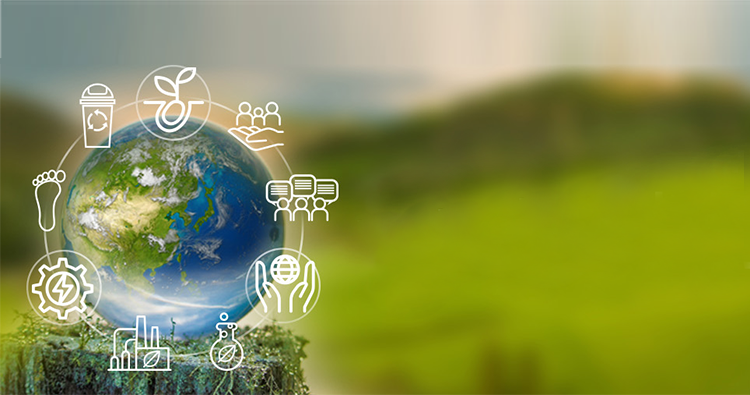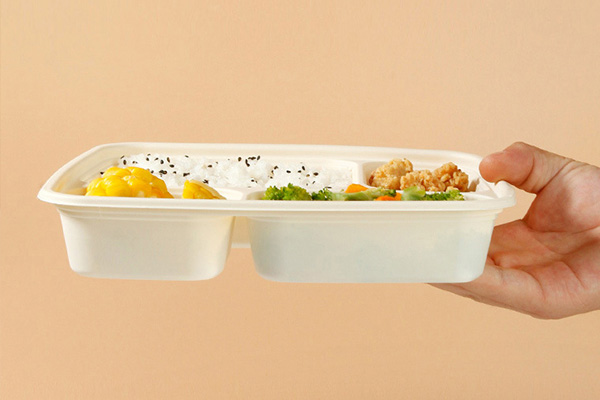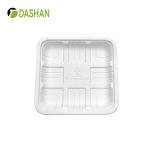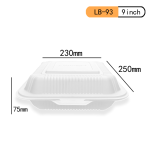Quick Summary
Compostable lunch boxes made from bagasse and cornstarch offer a safe, durable, and eco-friendly alternative to plastic. With fast biodegradability, heat resistance, and stylish designs, they reduce environmental impact and meet modern foodservice needs. DASHAN provides high-quality compostable packaging solutions to support sustainable living worldwide.
Introduction: From Slogan to Lifestyle

In the past, “environmental protection” was often treated as an abstract slogan, something idealistic but far removed from daily routines. Today, however, sustainability has become a practical lifestyle. People are paying more attention to the coffee cups they use, the shopping bags they carry, and the containers they rely on for takeout meals. Every choice contributes—positively or negatively—to the health of our planet.
Among the growing range of eco-friendly products, one category is quietly reshaping the food packaging industry: the compostable lunch box. These containers, made from natural renewable fibers, represent more than just a shift in materials—they embody a rethinking of how we consume, dispose, and live more responsibly.
The Hidden Cost of Plastic Packaging
Disposable plastic containers have long dominated the global foodservice industry. They are cheap, lightweight, waterproof, and convenient. Yet, the environmental and social costs of these conveniences are staggering.
-
Longevity of waste: A single plastic lunch box used for 20 minutes can take centuries to degrade. Instead of vanishing, it breaks down into smaller particles known as microplastics, which pollute soil, rivers, and oceans.
-
Marine pollution: According to the United Nations Environment Program, nearly 40% of global plastic waste comes from disposable packaging. A significant share ends up in oceans, where it endangers marine life and eventually re-enters the human food chain.
-
Health concerns: Plastics, especially when exposed to heat, can release harmful chemicals. Studies have linked microplastics and additives like BPA to health risks, raising alarm among consumers.
Plastic may appear inexpensive at checkout, but the long-term “invisible costs” include environmental cleanup, damage to ecosystems, and even potential medical expenses associated with exposure to toxins.
What Is a Compostable Lunch Box?

A compostable lunch box is a plant-based food container designed to naturally break down into non-toxic, organic matter under the right conditions.
Common raw materials include:
-
Sugarcane bagasse: a by-product of sugar production, once treated as waste, now upcycled into durable packaging.
-
Cornstarch: processed from renewable crops, offering a lightweight, compostable alternative to petroleum-based plastics.
-
Bamboo fiber: fast-growing and renewable, valued for its strength and natural antibacterial properties.
-
Kraft paper: sourced from responsibly managed forests, often used with water-based or plant-derived coatings.
The production process typically involves cleaning, pulping, pressing, and molding the fibers into sturdy containers. The result: packaging that is water-resistant, grease-resistant, and capable of handling both hot and cold foods. Most importantly, when disposed of properly, these products degrade within 60 to 180 days in composting environments—returning to the earth without leaving pollutants.
Why Compostable Boxes Are Better Choices

1. Safe and Food-Grade
Unlike plastics that may leach chemicals, compostable containers are free from BPA, phthalates, and other harmful additives. They can safely hold hot soups, oily stir-fries, or acidic salads without risk to health. Many are microwave- and freezer-safe, adding convenience for consumers.
2. Naturally Degradable
Compostable boxes convert back into natural components—mainly water, CO₂, and biomass. In industrial composting facilities, they degrade in two to three months. By comparison, plastic persists for hundreds of years.
3. Modern Design and Functionality
Advancements in molding technology mean compostable containers are no longer clunky or unattractive. They are designed with multiple compartments, leak-proof lids, and stylish finishes that meet modern foodservice needs. Many restaurants now consider them part of brand image, signaling care for both customers and the planet.
4. Social and Environmental Impact
By switching, individuals and businesses reduce reliance on fossil fuels, cut down greenhouse gas emissions from plastic production, and align with global sustainability goals. Customers increasingly reward such choices with loyalty and positive word-of-mouth.
Where Compostable Lunch Boxes Fit In
-
Takeout & Food Delivery
With food delivery booming worldwide, replacing plastic with compostable packaging makes an immediate difference. Leak-resistant bagasse boxes are ideal for curries, pastas, sushi, and more. -
Cafes & Light Food Stores
Salad bowls, sandwich containers, and snack boxes made from cornstarch or bagasse are becoming standard in eco-conscious outlets. -
Schools & Offices
Compostable trays and clamshells help institutions reduce waste while teaching younger generations about sustainable choices. -
Events & Catering
Large gatherings generate massive amounts of single-use packaging. Switching to compostable options not only reduces waste but also enhances the event’s eco-friendly image. -
Supermarkets & Convenience Stores
Ready-to-eat meals, fresh produce, and bakery items packaged in compostable containers appeal to modern consumers seeking healthier lifestyles.
The Cost Perspective
Critics often point to cost as a barrier. While compostable lunch boxes may cost slightly more upfront than their plastic counterparts, the equation changes when broader factors are considered:
-
Compliance with regulations: With increasing plastic bans, non-compliance can lead to fines and reputational harm.
-
Consumer preference: Surveys show that eco-conscious consumers are willing to pay a small premium for sustainable packaging.
-
Economies of scale: As production expands globally, unit costs continue to drop.
-
Reduced waste management expenses: Compostable packaging integrates into organic waste streams, reducing landfill pressure and municipal disposal costs.
From a long-term perspective, compostable options are not just ethical—they are financially viable.
Misconceptions About Compostable Products
It’s essential to clarify that compostable packaging is not a magic bullet:
-
Proper conditions required: Composting depends on temperature, humidity, and microbial activity. In landfills, where oxygen is limited, degradation slows significantly.
-
Waste management infrastructure: Not all cities have industrial composting facilities. Public education and infrastructure development must grow alongside product adoption.
-
Consumer behavior: Throwing compostables into regular trash undermines their purpose. Clear labeling and disposal guidance are critical.
Understanding these limitations helps businesses and consumers make informed, responsible choices.
Global Momentum Toward Compostable Packaging
The shift toward sustainable packaging is no longer optional—it’s inevitable.
-
Policy push: The European Union, Canada, Japan, and China have introduced restrictions or bans on single-use plastics, accelerating the need for alternatives.
-
Corporate responsibility: Major brands in foodservice and retail, from Starbucks to McDonald’s, are piloting or rolling out compostable packaging solutions.
-
Consumer demand: Social media amplifies eco-conscious lifestyles, pressuring businesses to adopt visible green practices.
Market analysts project double-digit annual growth in the compostable packaging sector over the next decade, driven by innovation, regulation, and shifting consumer values.
DASHAN: Trusted Partner in Compostable Packaging

Amid this transformation, DASHAN stands out as a reliable provider of compostable solutions. The company specializes in producing sugarcane bagasse and cornstarch-based containers that meet international quality and safety standards.
What DASHAN Offers:
-
Diverse product portfolio: compostable lunch boxes, bowls, trays, plates, cups, and cutlery.
-
Performance-driven design: heat-resistant, oil-resistant, and leak-proof products suitable for a wide range of cuisines.
-
Eco-certification: products tested and verified to be compostable under industrial and home composting conditions.
-
Customization: options for branding, printing, and tailored packaging designs for businesses.
-
Global reach: serving restaurants, supermarkets, caterers, and eco-conscious retailers worldwide.
By choosing DASHAN, businesses reduce plastic dependency while ensuring reliable, safe, and aesthetically pleasing packaging solutions. The company’s mission is simple but powerful: to make sustainable packaging accessible and practical for everyone.
Conclusion: Small Choices, Big Impact
Environmental protection is not perfectionism—it’s about consistent, thoughtful choices. Switching from plastic to compostable lunch boxes may seem minor, but multiplied across millions of daily meals, the impact is profound.
The earth will not collapse from a single plastic box, nor will it heal instantly from one compostable container. But as more people adopt greener habits, momentum builds, and collective change takes shape.
Compostable packaging embodies this philosophy: practical, safe, attractive, and environmentally responsible. It’s not a futuristic dream; it’s available today. By embracing solutions like those offered by DASHAN, individuals and businesses alike can turn sustainability from a slogan into a lifestyle.
FAQs About Compostable Lunch Boxes
Q1: Are bagasse lunch boxes safe for microwave use?
Yes, bagasse containers are generally microwave safe. DASHAN’s compostable lunch boxes can handle hot foods and reheating without releasing harmful chemicals.
Q2: How long does it take for bagasse lunch boxes to decompose?
In industrial composting conditions, bagasse lunch boxes typically decompose within 60–90 days, turning into water, carbon dioxide, and organic matter.
Q3: Can compostable lunch boxes hold liquids or oily foods?
Absolutely. DASHAN bagasse containers are designed to be leak-proof and oil-resistant, making them suitable for soups, curries, and greasy foods.
Q4: Are compostable containers more expensive than plastic?
Initially, yes, but as demand grows and production scales up, costs continue to decrease. Many businesses also view the switch as an investment in sustainability and brand value.
Q5: Where can I buy DASHAN compostable lunch boxes?
DASHAN supplies bagasse and cornstarch tableware to restaurants, supermarkets, catering services, and eco-conscious consumers worldwide. Custom branding options are also available.
Reference Links
-
United Nations Environment Programme – Plastic Pollution:
https://www.unep.org/plasticpollution -
European Commission – Single-use plastics directive:
https://environment.ec.europa.eu/topics/plastics/single-use-plastics_en -
Ellen MacArthur Foundation – New Plastics Economy:
https://www.ellenmacarthurfoundation.org/our-work/activities/new-plastics-economy -
National Renewable Energy Laboratory – Bioplastics research:
https://www.nrel.gov/research/bioplastics.html -
Sustainable Packaging Coalition:
https://sustainablepackaging.org




